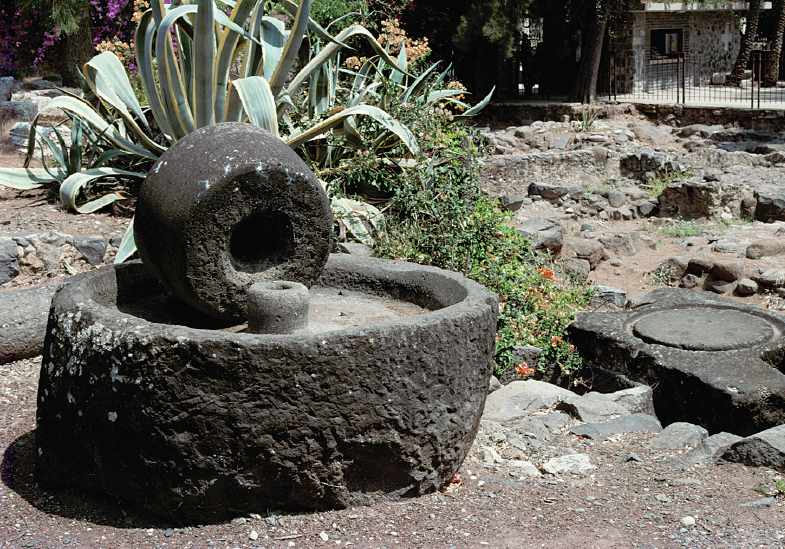Understanding Western Society
Printed Page 100
Commerce
Alexander’s conquest of the Persian Empire had immediate effects on trade. In the conquered Persian capitals, Alexander had found vast sums of gold, silver, and other treasure. This wealth financed the creation of new cities, the building of roads, and the development of harbors. It also provided the thousands who participated in his expeditions with booty, with which they could purchase commodities. Whole new fields lay open to Greek merchants, who eagerly took advantage of the new opportunities. Commerce itself was a leading area where Greeks and non-
Trade was facilitated by the coining of money. Most of the great monarchies coined their money according to a uniform system, which meant that much of the money used in Hellenistic kingdoms had the same value. Traders were less in need of money changers than in the days when each major power coined money on a different standard.
Overland trade was conducted by caravan, and the backbone of this caravan trade was the camel. Luxury goods that were light, rare, and expensive traveled over the caravan routes to Alexandria or to the harbors of Phoenicia and Syria, from which they were shipped to Greece, Italy, and Spain. In time, these luxury items became more commonplace, in part as the result of an increased volume of trade. Due to the prosperity of the period, more people could afford to buy gold, silver, ivory, precious stones, spices, and a host of other easily transportable goods. Perhaps the most prominent good in terms of volume was silk, and the trade in silk later gave the major East-
The durability and economic importance of the caravan routes are amply demonstrated by the fact that the death of Alexander, the ensuing wars of his successors, and later regional conflicts had little effect on trade. Numerous mercantile cities grew along these routes, and commercial contacts brought people from far-
More economically important than the trade in luxury goods were commercial dealings in essential commodities like raw materials and grain and industrial products such as pottery. The Hellenistic monarchies usually raised enough grain for their own needs as well as a surplus for export. This trade in grain was essential for the cities of Greece and the Aegean, many of which could not grow enough on their own (see Map 4.2).

Most trade in bulk commodities was seaborne. Maritime trade provided opportunities for workers in other industries and trades; some examples of workers who saw increased opportunity were sailors, shipbuilders, dockworkers, accountants, teamsters, and pirates. Piracy was always a factor in the Hellenistic world, so ships’ crews had to be ready to defend their cargoes as well as transport them.
Cities in Greece often paid for their grain by exporting olive oil and wine. When agriculture and oil production developed in Syria, Greek products began to encounter competition from the Seleucid monarchy. Later in the Hellenistic period, Greek oil and wine, shipped in mass-
Another significant commodity was fish, which for export was salted, pickled, or dried. This trade was especially important because fish provided poor people with protein, an essential element of their diet. Salt, too, was often imported, and there was a very small trade in salted meat, which was a luxury item. Far more important was the trade in honey, dried fruit, nuts, and vegetables. Of raw materials, wood was high in demand, but little trade occurred in manufactured goods.
Slaves were a staple of Hellenistic trade, traveling in all directions on both land and sea routes. War provided prisoners for the slave market; to a lesser extent, so did kidnapping and capture by pirates, although the origins of most slaves is unknown. Both old Greek states and new Hellenistic kingdoms were ready slave markets, and throughout the Mediterranean world, slaves were almost always in demand. Slaves were to be found in the cities and temples of the Hellenistic world; in the shops, fields, armies, and mines; and in the homes of wealthier people.
>QUICK REVIEW
How did trade facilitate cultural exchange during the Hellenistic period?